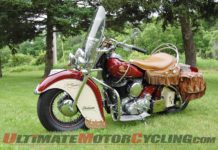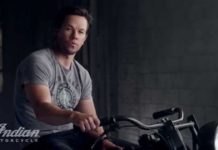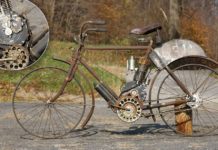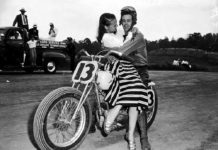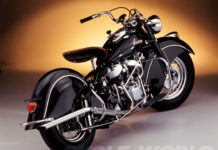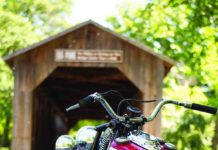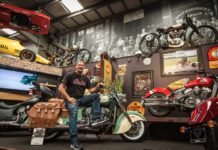1947 Indian Chief Roadmaster | History-Making Motorcycles
The recent resurrection of Indian Motorcycle by Polaris conjures memories of the originals and engenders comparisons of the classics to the new generation.
Larry Van...
Indian Motorcycle Military Legacy
America's first motorcycle company, today announced its Scout Inspired Custom Series; a chronology of the rich, century-long history of the Indian(R) Scout(TM) motorcycle....
105-year-old ‘motorbike’ 1906 Indian Camelback could be worth £50k
The 1906 Indian Camelback, one of the first ever two-wheeled motorized machines, is hugely desirable despite its rusty appearance and could fetch £50,000.
----
This weekend...
Georgia Motorcycle History: The First 60 Years: 1899-1959
Georgia Motorcycle History
The First 60 Years: 1899-1959
A new book has just been published with some very nice photographs. If you are a fan of...
Indian Motorcycles- History of America’s Oldest Motorcycle Brand
High on the list of truths universally acknowledged must be the fact that the Indian Motorcycle, as a legend, a logo and a symbol...
Hail to the Indian Chief Motorcycle
This 1948 Indian Chief is one of the most important Indian motorcycles on the planet.
There’s a good chance, many years from now, that history...
John Gee’s Motorcycle Collection in Australia
John Gee's extraordinary Antique Motorcycles collection
46 PICTURES
Antique Motorcycles, in Moorabbin, outside Melbourne, Australia(Credit: Loz Blain/New Atlas)
VIEW GALLERY - 46 IMAGES
Tucked away in Melbourne's urban sprawl is one of...
For Sale: A 1919 Indian Power Plus Board Tracker
Few of us can afford it but that doesn't mean we can't look at the pictures! ...

